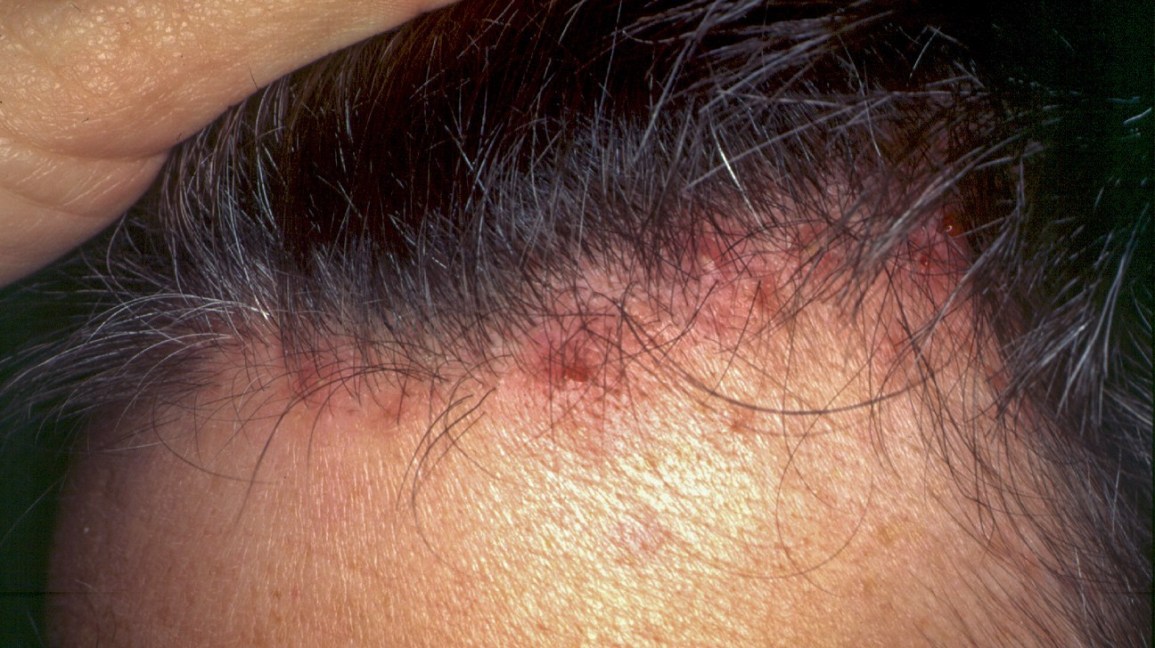What is folliculitis decalvans?
 Scalp Folliculitis is a typical skin condition in which hair follicles become excited. It’s typically brought about by bacterial or fungal contamination. From the start, it might look like little red knocks or white-headed pimples around hair follicles — the small pockets from which every hair develops. The disease can spread and transform into nonhealing, hard bruises. The condition isn’t dangerous, however, it very well may be irritating, sore and humiliating. The condition dominatingly influences youthful and moderately aged grown-ups and is increasingly basic in guys. It tends to be genetic in certain families. Extreme diseases can cause changeless hair loss and scarring. In the event that you have a gentle case, it’ll likely clear in a couple of days with fundamental self-care measures. For increasingly genuine or repeating folliculitis, you may need to see a doctor for physician recommended drugs.
Scalp Folliculitis is a typical skin condition in which hair follicles become excited. It’s typically brought about by bacterial or fungal contamination. From the start, it might look like little red knocks or white-headed pimples around hair follicles — the small pockets from which every hair develops. The disease can spread and transform into nonhealing, hard bruises. The condition isn’t dangerous, however, it very well may be irritating, sore and humiliating. The condition dominatingly influences youthful and moderately aged grown-ups and is increasingly basic in guys. It tends to be genetic in certain families. Extreme diseases can cause changeless hair loss and scarring. In the event that you have a gentle case, it’ll likely clear in a couple of days with fundamental self-care measures. For increasingly genuine or repeating folliculitis, you may need to see a doctor for physician recommended drugs.
What causes Scalp Folliculitis?
This isn’t surely known and the careful reason is obscure. As a rule, microorganisms called Staphylococcus aureus (S. aureus) can be secluded from the pustules. It is felt that S.aureus triggers an insusceptible response which brings about the progressions that are seen.
What does folliculitis decalvans resemble?
Influenced regions create repetitive harvests of pustules just as redness, scaling, crusting and loss of hair. This causes scarring which inevitably brings about pale, smooth, uncovered patches. In certain individuals, numerous hairs can be seen leaving from a single hair follicle. This is known as “tufting”. Scalp Folliculitis all the more ordinarily influence the top and back segments of the scalp. Other hair-bearing regions, for example, the armpits, facial hair or pubic area may infrequently additionally be influenced. There might be tingling, agony and delicacy in the influenced zones. Be that as it may, a few people don’t encounter any side effects whatsoever.
How is folliculitis decalvans analyzed?
The determination is made by a dermatologist from clinical history and assessment discoveries. A swab might be taken from a flawless pustule from the scalp or inside the nose to check for the nearness of S. aureus. Skin scratching might be required to prohibit fungal infection. Once in a while, a couple of biopsies from the scalp might be expected to set up the conclusion and reject other scarring types of hair loss.
What treatment is accessible for folliculitis decalvans?
Treatment can be troublesome and is planned for controlling as opposed to “restoring” the condition. Topical antibiotics, for example, 1% clindamycin can be attempted in the first occurrence in quite a while. Nonetheless, the increasingly extreme ailment will require oral antibiotics, for example, doxycycline, minocycline, erythromycin or dicloxacillin. Rifampicin is an antibiotic that is said to have more grounded activity against S. aureus and is typically endorsed together with another antibiotic (clindamycin) to forestall the development of microorganism’s opposition. Some influenced people will require long haul treatment to avert backslide. S. aureus, if present, should be destroyed by utilizing intranasal antibiotics, for example, 2% mupiricin salve. Also, a disinfectant or tar cleanser might be prescribed. The expansion of topical and intralesional (infusions) corticosteroids lessens irritation and indications of tingling and consuming. Oral corticosteroids are sporadically recommended to control the forceful ailment. Numerous different medications, for example, oral isotretinoin, dapsone, and zinc sulfate have been utilized with variable achievement. Laser treatment or surgeries are not generally utilized and flare-ups of the condition can happen following treatment.


 WhatsApp us
WhatsApp us